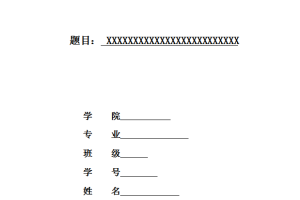摘 要
近年来,大跨度预应力混凝土连续刚构桥由于其自身的显著优点,在我国交通工程领域得到了大面积推广使用。但随着大量预应力混凝土连续刚构桥的建成,其在施工和运营中暴露了许多问题有待解决,如施工误差导致的主梁节段轴线偏位。因此,为了确保其成桥状态的内力和线型满足规范要求,在桥梁设计和施工阶段需要对结构进行仿真分析计算,并且对受力关键部位采取重点监控,另外成桥后运营阶段也要进行验算分析以确保桥梁能够满足使用要求。
本文以新建兰渝铁路南充嘉陵江双线特大桥为工程背景,该桥为88m+160m+88m预应力混凝土连续刚构桥,在悬臂浇筑施工过程中出现了悬臂浇筑段最大达到92mm的轴线偏位。在理论研究和对全桥有限元仿真计算的基础上,通过对预应力混凝土连续刚构桥的施工过程进行模拟分析,研究结构在施工过程中的内力、应力和挠度,为桥梁施工提供一整套分析数据。通过建立理想状态的成桥设计模型,对桥梁运营阶段进行计算分析,该桥设计模型可以满足规范要求。
同时,基于设计模型模型,考虑施工偏位情况,建立偏位模型,计算在梁段偏位的情况下,桥梁施工阶段与运营阶段的结构受力情况。经过计算分析,偏位模型在运营阶段可以满足规范要求,能够安全运营。在此基础上,将偏位模型的计算结果与设计模型的结果进行对比,从而得出以下结论:偏位模型与设计模型应力趋势一致,且总体数据相差很小,最大数值相差在1%以内,故轴线偏位对该桥的设计应力值影响比较小;偏位模型相对设计模型的挠度在中跨跨中处相差最大,增大了0.7%,轴线偏位对该桥的挠度影响也比较小;主力组合作用下,设计模型扭转剪应力最大值为0.22MPa,偏位模型为0.46MPa,均远小于规范的限值6.29MPa。该桥在轴线偏位后,偏位模型与原设计模型的受力特性基本一致。
本文把施工误差产生的轴线偏位对桥梁使用性能的影响进行了对比分析研究,对同类桥梁的设计和施工可以起到一定指导作用。
关键词:连续刚构 仿真计算 施工偏位 对比分析
Abstract
In recent years, the use of the large span prestressed concrete continuous rigid frame bridge has been promoted widely in the field of traffic engineering in China because of it’s significant advantages. But with lots of prestressed concrete continuous rigid frame bridges built, they have exposed many problems to be solved in the process of construction and operation, such as the deviation of the axis of segmental girders. Therefore, the structure needs simulation analysis in bridge design and construction stage, so as to ensure that the internal forces and linear under finished stage can meet the code requirement. Meanwhile, the key subassemblies under force should be given intensive monitoring. Besides, checking computations and analyses should be conducted in operation stage to ensure that the bridge meets functional requirement.
The thesis is at the background of double-track exceptionally large bridge on the Jialing River of Nanchong on the newly-built Lanzhou-Chongqing Railway. As a prestressed concrete continuous rigid frame bridge, the main spans arrange as (88+160+88) m. During the cantilever casting construction, the maximum deviation of the axis of cantilever casting segments reached 92mm. On the basis of theoretical research and finite element simulation of whole bridge, the author studied on the internal forces, stresses and deflections of the structure in the process of construction, through the simulation analysis of construction process of the prestressed concrete continuous rigid frame bridge, providing a set of analytical data for the bridge construction. After building the design model under ideal finished stage, the author conducted the calculation analysis in operation stage. The result shows that the bridge model can meet the code requirement.
Simultaneously, a deviation model was built based on the design model in consideration of the case of construction deviation. Then the author calculated the structure force condition in construction and operation stage, considering the deviation of segmental girders. Judging from the relevant results, the deviation model can conform to the code requirement in operation stage, indicateing that the bridge works well. On this basis, the author then compared the results of the deviation model with the results of the design model. Thus the auther finally came to the following conclusions: the trends of the stress among the two models were consistent and the overall data only differed very minorly with the maximum difference value less than 1%. So the deviation of the axis of segmental girders has had relatively small impact on design stress values; the difference of the deflection at mid-section in the middle span between the design model and the deviation model reached maximum, with the increment of 0.7% compared with the former. Therefore the deviation of the axis of segmental girders also has had relatively small impact on the deflection; for the combined action of main forces, the maximum torsional shear stress was 0.22 MPa in the design model, which was up to 0.46 MPa in the deviation model. Both of them were far less than the code limit of 6.29 MPa. The mechanical characteristics in design model and deviation model were basically identical, after considering the deviation of the axis of segmental girders.
This paper made a comparative analysis of the influence of the deviation of the axis of segmental girders due to construction errors on the bridge service performance, which can provide good reference for the design and construction of similar bridges.
Key words:Continuous rigid frame bridge;Simulation calculation;Construction deviation; Comparative analysis
目 录
摘要…………………………………………………………… I
Abstract……………………………………………………….. II
1 绪论…………………………………………………………. 1
1.1 连续刚构桥概述…………………………………………….. 1
1.2 连续刚构桥的发展趋势……………………………………….. 1
1.3 大跨径连续刚构桥仿真计算……………………………………. 2
1.4 本文的研究意义和研究内容……………………………………. 3
1.5 有限元计算………………………………………………… 4
2 连续刚构桥的特点………………………………………………. 7
2.1 连续刚构桥结构特点…………………………………………. 7
2.1.1 主梁………………………………………………….. 7
2.1.2 桥墩………………………………………………….. 8
2.1.3 预应力钢束……………………………………………. 10
2.4 连续刚构桥的力学特点………………………………………. 10
2.5 连续刚构桥施工结构特点…………………………………….. 11
2.6 本章小结…………………………………………………. 11
3 连续刚构桥仿真计算……………………………………………. 12
3.1 本文工程背景介绍………………………………………….. 12
3.1.1 概况…………………………………………………. 12
3.1.2 主要技术标准及适用范围…………………………………. 12
3.2 主要施工步骤及划分施工阶段…………………………………. 13
3.3 建立全桥有限元仿真计算模型…………………………………. 14
3.3.1 材料信息……………………………………………… 14
3.3.2 荷载信息……………………………………………… 14
3.3.4 全桥有限元仿真计算模型…………………………………. 17
3.4 施工阶段计算分析………………………………………….. 18
3.4.1 施工阶段应力………………………………………….. 19
3.4.2 施工阶段弯矩………………………………………….. 24
3.5 运营阶段计算分析………………………………………….. 25
3.5.1 强度验算……………………………………………… 25
3.5.2 抗裂性验算……………………………………………. 30
3.5.3 截面应力验算………………………………………….. 37
3.5.4支座反力与结构变形……………………………………… 40
3.6本章小结…………………………………………………. 42
4 轴线偏位计算分析……………………………………………… 43
4.1 桥梁轴线偏位概况………………………………………….. 43
4.2 建立偏位模型……………………………………………… 46
4.3 运营阶段各项性能计算………………………………………. 47
4.3.1 强度验算……………………………………………… 47
4.3.2 抗裂性验算……………………………………………. 48
4.3.3 截面应力验算………………………………………….. 52
4.3.4 支座反力与结构变形…………………………………….. 55
4.4偏位模型与设计模型对比分析…………………………………. 56
4.4.1 应力对比……………………………………………… 56
4.4.2 挠度对比……………………………………………… 58
4.4.3 主梁扭转效应对比………………………………………. 59
4.5 本章小结…………………………………………………. 62
结 论……………………………………………………….. 63
致 谢………………………………………………………. 65
参考文献………………………………………………………. 66
攻读硕士学位期间发表的论文及科研成果……………………………… 67





